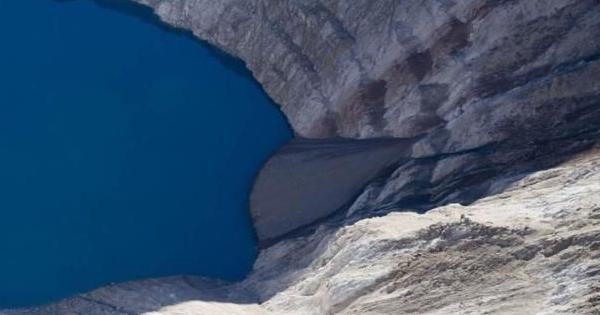Montana Tunnels’ long and rocky road toward oblivion continues.
Questions linger about reclamation of the long-inactive mine.
On July 17, a federal bankruptcy judge dismissed Montana Tunnel Mining’s case under which the open-pit mine was attempting to reorganize financially under Chapter 11 bankruptcy protection.
Judge Benjamin Hursh also rejected an option that would have converted the case to Chapter 7 bankruptcy, allowing liquidation of assets.
Among other things, Hursh ruled, “In this Chapter 11 bankruptcy, [Montana Tunnels Mining] failed to make payments required under the confirmed plan.”
An aerial view from 2018 of the Montana Tunnels pit. The mine has not operated since 2008.
The company had filed for Chapter 11 protection in December 2022 after failing to make timely bond payments to the Montana Department of Environmental Quality.
People are also reading…
During a more recent court hearing, Dan Walsh, DEQ’s mining bureau chief, testified DEQ had no faith in Montana Tunnels’ ability to complete required reclamation or provide the necessary deficient bond payments.
Montana Tunnels mined gold, silver, zinc and lead at its open-pit mine near Jefferson City.
But the troubled mine hasn’t operated since 2008 and its permit was suspended in 2018 for failure to post an adequate bond. When Montana Tunnels filed for Chapter 11 federal bankruptcy protection in 2022, Derf Johnson, deputy director for the Montana Environmental Information Center, described the bankruptcy petition as predictable and appalling.
In January, DEQ announced it was initiating the bond forfeiture process for the Montana Tunnels mine after it failed to make a $1.5 million payment in December per a court approved bankruptcy stipulation.
At the time, Walsh addressed the forfeiture.
“While this wasn’t the outcome we were hoping for via the bankruptcy proceedings, we will take the necessary steps to forfeit the bond and allow other operators to consider the mining permit or we’ll ensure that the site is reclaimed,” Walsh said then.
Rebecca Harbage, DEQ’s public policy director, said last week that the agency holds $23.7 million in bond money and the total required bond for the current site disturbance is $40.9 million.
“A successor operator would be required to post the remaining additional bond amount,” Harbage said. “DEQ has the authority to use a portion of the forfeited bonds to maintain the site, should Montana Tunnels cease maintenance issues.”
Judge Hursh’s ruling mentions potential interest in buying the mine by the Mooney Group and James Mooney.
Hursh wrote that Mooney testified the Mooney Group was in the early stages of due diligence in consideration of buying the mine’s assets and “would only entertain the possibility of purchasing [Montana Tunnels’] assets if [it] was in bankruptcy.”
The DEQ and others had hoped Hursh would convert the Chapter 11 bankruptcy to Chapter 7, but the judge ruled the law clearly precluded that option.
In June, the court had received separate but similar letters from Dave Selvig and Erik Wilkerson, school officials in Clancy and Boulder, respectively, that supported the Chapter 7 conversion.
“If the current landowner is permitted to keep the property, his past practice of being an unreliable taxpayer will have detrimental effects on our school,” Wilkerson wrote.
Harbage said DEQ can keep the mining permit in suspension for up to five years and transfer it to a successor operator, prior to undertaking reclamation.
“This allows an opportunity for a successor to post adequate bond and ultimately take charge of reclamation in lieu of the state bearing the burden,” she said. “During this period, DEQ will continue to conduct regular inspections and ensure maintenance, such as dust control of the tailings storage facility, continues.”
Johnson said any successor must have the financial wherewithal to post an adequate reclamation bond and shoulder needed reclamation, both current and future.
“Reclamation must be borne by the miner,” he said. “It’s the cost of doing business.”
Both Johnson and Bonnie Gestring, Northwest program director for Earthworks, described the situation at Montana Tunnels as a mess. And both cited ongoing concerns about the mine’s effects on Clancy Creek, which has been routed past a sloughing pit wall in a temporary pipe.






